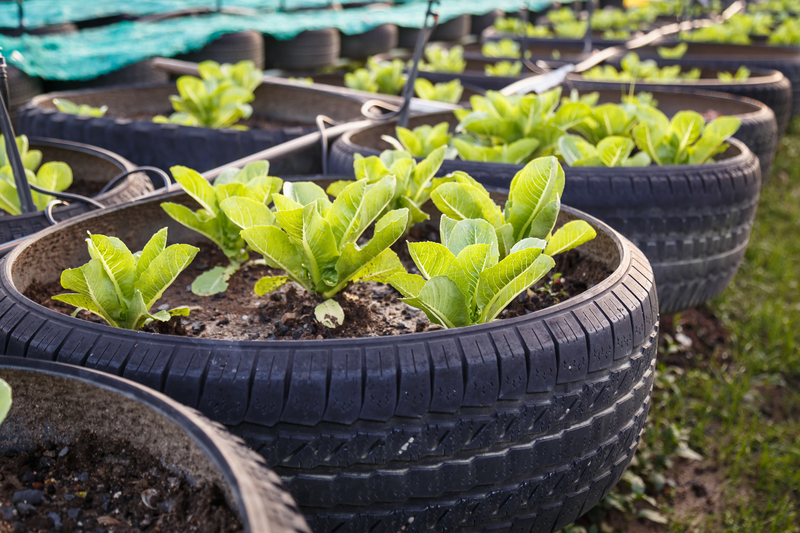Refuse-Derived Fuel (RDF) is a type of fuel generated from various types of waste such as municipal solid waste (MSW), industrial waste, and commercial waste. This alternative fuel source not only helps in mitigating waste disposal issues but also contributes to energy production. The utilization of RDF can lead to significant environmental and economic benefits. In this article, we dive deep into RDF production processes, advantages, challenges, and essential tips for effective implementation.
What is Refuse-Derived Fuel (RDF)?
Refuse-Derived Fuel (RDF) is produced by shredding, separating, and treating waste materials to convert them into fuel that can be used in various industrial applications. The typical components of RDF include plastics, paper, textiles, and other non-recyclable materials. RDF can be used in cement kilns, power plants, and as a substitute for fossil fuels.

RDF Production Process
The production of RDF involves several steps to ensure that the waste materials are converted into a usable form of fuel. Let's explore these key steps:
1. Waste Collection and Sorting
The first step in RDF production is the collection and sorting of waste. This involves gathering waste materials from municipal, industrial, and commercial sources. The collected waste is then sorted to separate recyclable materials such as metals and glass from non-recyclable materials that can be used for RDF production.
2. Shredding and Grinding
After sorting, the non-recyclable waste materials undergo shredding and grinding to reduce their size. This step ensures that the material is uniform and can be easily processed in subsequent steps.
3. Drying
The shredded and ground waste is then dried to remove moisture content. High moisture content can reduce the calorific value of RDF and affect its combustion properties. Drying ensures that the RDF has a consistent quality and burns efficiently.
4. Pelletizing
In some cases, the processed waste is further pelletized to create RDF pellets. Pelletizing enhances the handling, storage, and transportation of RDF. Pellets are also more uniform in size and shape, making them suitable for automated feeding systems in industrial applications.
Applications of RDF
RDF has diverse applications in various industries. Some of the most common applications include:
1. Energy Recovery in Power Plants
RDF can be used as a fuel in power plants for energy recovery. It provides an efficient and cost-effective way to generate energy while reducing the dependency on traditional fossil fuels.
2. Cement Kilns
Cement kilns can use RDF as an alternative fuel to coal. The high temperatures in cement kilns ensure complete combustion of RDF, reducing emissions and promoting sustainable waste management.
3. Industrial Boilers
Industrial boilers can also utilize RDF for heating purposes. This helps industries to minimize their operational costs and carbon footprint by substituting conventional fuels with RDF.
Pros and Cons of RDF
Pros
- Waste Reduction: RDF helps in reducing the amount of waste that goes to landfills, promoting sustainable waste management.
- Energy Production: It provides a valuable source of energy, reducing the reliance on conventional fossil fuels.
- Economic Benefits: Utilizing RDF can lower energy costs for industries and municipalities.
- Environmental Benefits: RDF production and utilization can reduce greenhouse gas emissions and other pollutants.
- Resource Efficiency: Converting waste materials into RDF promotes the efficient use of resources.
Cons
- High Initial Investment: Setting up RDF production facilities requires significant capital investment.
- Complex Processing: The production process is complex and requires advanced technology and expertise.
- Contaminants: The presence of hazardous materials in waste can pose challenges during RDF production and combustion.
- Limited Acceptance: Not all industries are equipped or willing to utilize RDF, restricting its widespread adoption.
Tips for Effective RDF Production
- Conduct Thorough Waste Audits: Before setting up an RDF production facility, conduct comprehensive waste audits to understand the composition and quantity of waste available.
- Invest in Advanced Technology: Utilize advanced technologies for sorting, shredding, and drying to ensure high-quality RDF production.
- Quality Control: Implement stringent quality control measures to ensure consistent RDF quality and performance.
- Collaborate with Industries: Establish partnerships with industries that can utilize RDF as a fuel to ensure a steady demand for your product.
- Compliance with Regulations: Ensure that your RDF production processes comply with local and international environmental regulations and standards.

Key Takeaways
- RDF is an effective solution for reducing waste and generating energy.
- The production process involves multiple steps including collection, sorting, shredding, drying, and pelletizing.
- RDF has diverse applications in power plants, cement kilns, and industrial boilers.
- While RDF offers numerous benefits, there are challenges such as high initial investment and potential contaminants.
- Effective RDF production requires thorough waste audits, advanced technology, and strict quality control.
Conclusion
Refuse-Derived Fuel (RDF) production presents a promising opportunity to address the dual challenges of waste management and energy generation. By converting non-recyclable waste into valuable fuel, RDF not only reduces landfill waste but also offers a sustainable alternative to fossil fuels. While there are challenges associated with RDF production, the environmental and economic benefits make it a worthwhile pursuit. By following best practices and investing in advanced technologies, industries and municipalities can harness the potential of RDF to achieve a more sustainable future.
